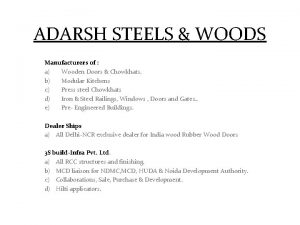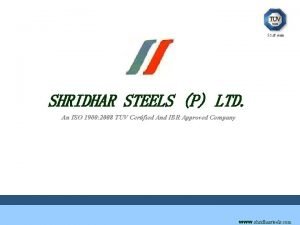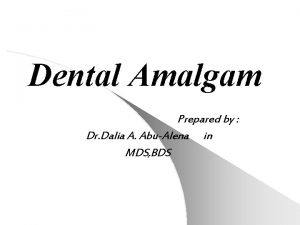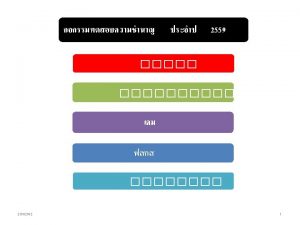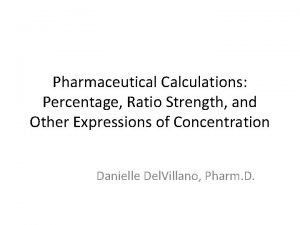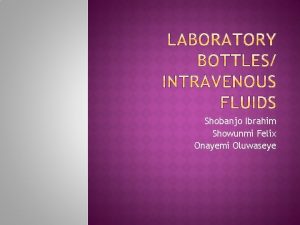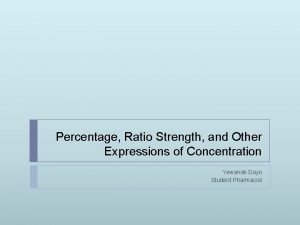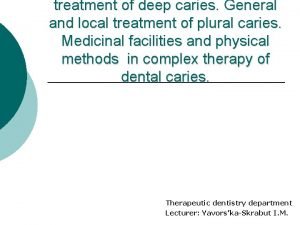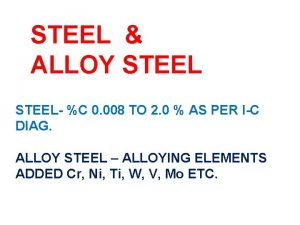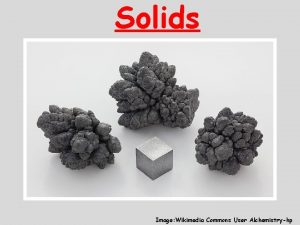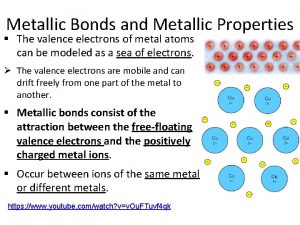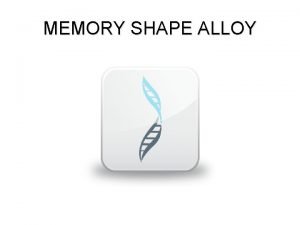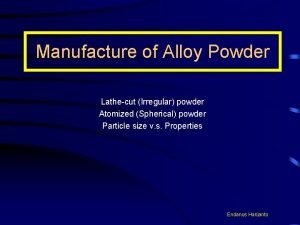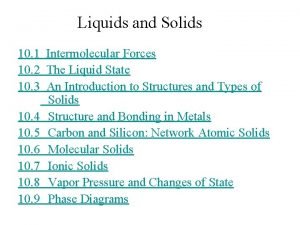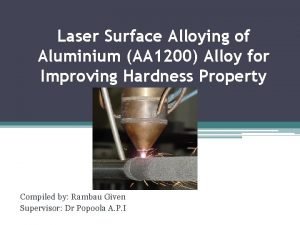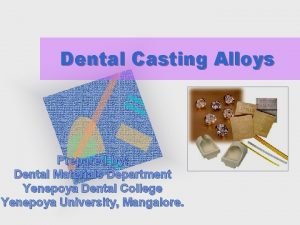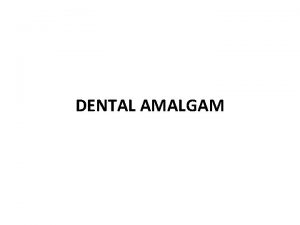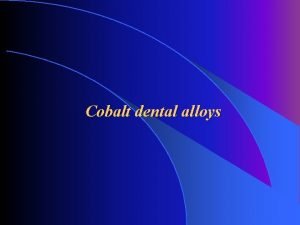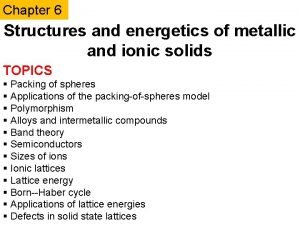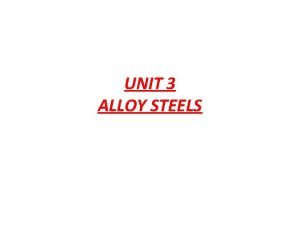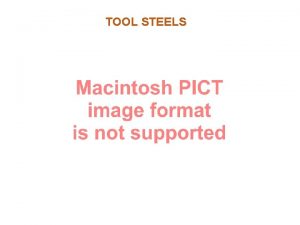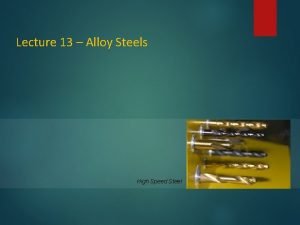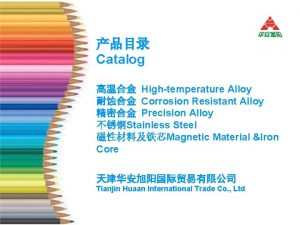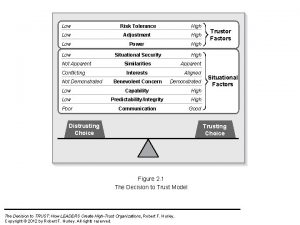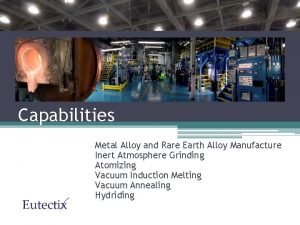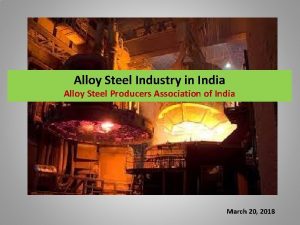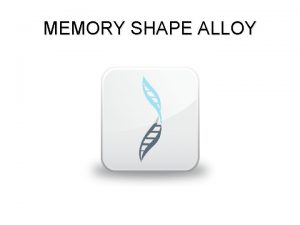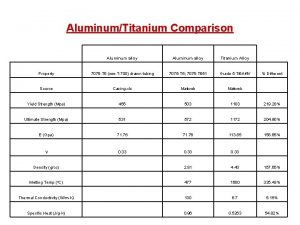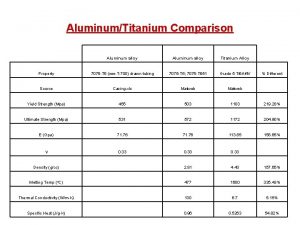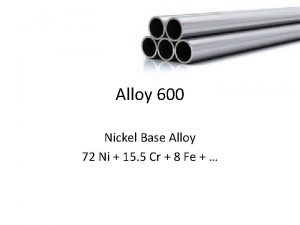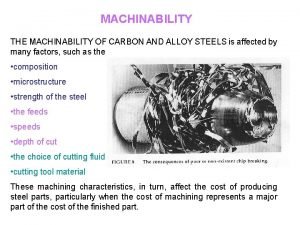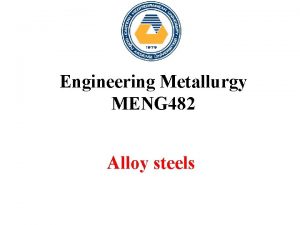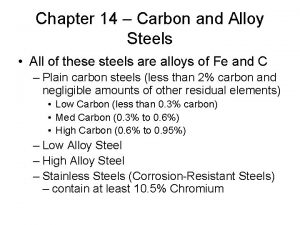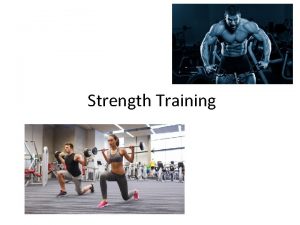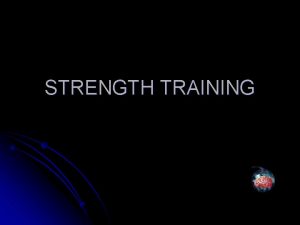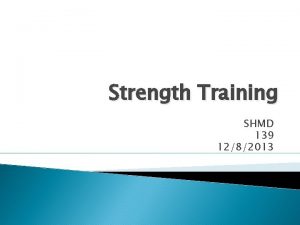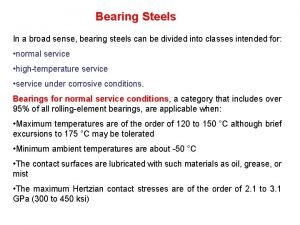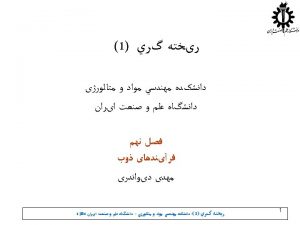High Strength Low Alloy Steels HSLA HSLA steels

























- Slides: 25


High Strength Low Alloy Steels (HSLA) HSLA steels are low carbon steels that contain up to 10 % of alloying additions. The alloying elements permit HSLA steels to be quenched and tempered to obtain high levels of strength and impact toughness. The “hardness” of martensite and bainite is determined by the carbon content and not by the alloying elements. The alloying additions simply enable martensite and bainite to form during quenching.

High Strength Low Alloy Steels (HSLA) Even so, the hardness of low carbon martensite and lower bainite (RC 50) is greater than the hardness of both course pearlite (RC 20) and fine pearlite (RC 40) so the strength of HSLA steels can be increased above the limits obtained in hotworked steels containing fine pearlite.

High Strength Low Alloy Steels (HSLA) Note the low C We are going to look at the properties of these steels in detail in the following slides.

High Strength Low Alloy Steels (HSLA) A 533 grade B contains small amounts of Ni and Mo, which give it sufficient hardenability to form a ferrite plus bainite microstructure on quenching. The bainite is tempered to improve the toughness, giving a better strength, but similar ductility to the hot worked low-carbon plaincarbon steels. The steel is used for nuclear vessels and steam generators.

High Strength Low Alloy Steels (HSLA) Ferrite and tempered bainite form in A 533 grade B quenched from 900 o. C and tempered at 620 o. C.

High Strength Low Alloy Steels (HSLA) Grades A 543 class 1 and A 517 grade F have very high yield and tensile strengths for low carbon steels in addition to good toughness. The high strengths of these steels are achieved by alloy additions of Ni, Cr, and Mo with further additions of V, Zr, and B The Ni, Cr, Mo + V in steel A 543 enables a mixture of martensite and bainite to form on quenching, while the additional Zr and B in A 517 steels enables 100% martensite to form on quenching to give even greater strength. Together Zr and B enhance strength by forming a precipitate at high temperatures in the liquid phase that will nucleate austenite to form a fine grain structure. Zr and B are commonly used in many types of alloys for this purpose.

High Strength Low Alloy Steels (HSLA) The toughness of A 543 class 1 and A 517 grade F steels is developed by tempering the bainite and/or martensite at relatively high temperatures of 600 -650 o. C. These steels are used in plates, shapes, forgings and for weld constructions including bridges and nuclear pressure vessels. Hummer vehicles and personal vehicles used in Iraq have been found to be insufficient to block shrapnel from explosives such as land mines so new light armor vehicles have been built, which have HSLA steel plates for panels and doors instead of the low-C steels used previously. People are still dying in these vehicles even though the vehicles remain in tact – do you know why?

Tempered bainite and martensite formed in A 543 class 1 quenched from 850 o. C and tempered at 650 o. C. Tempered martensite formed in A 517 grade F quenched from 925 o. C and tempered at 650 o. C.

High Strength Low Alloy Steels (HSLA) Steels A 203 grade D and A 553 type 1 contain Ni to improve low temperature notch toughness. The presence of 3. 5 %Ni in Steel A 203 does not improve the strength above that of a hot worked plain carbon steel because Ni does not significantly improve the hardenability, i. e. , ability to form martensite. but after tempering, the ductile-brittle transition temperature of this steel is lowered to below -20 o. C. This steel is used for a variety of relatively low-stress, low temperature applications.

High Strength Low Alloy Steels (HSLA) The increased Ni content of 9% in steel A 533 improves the strength by “solid solution strengthening” up to the level of the Ni-Cr-Mo HSLA steel and also gives A 533 a higher ductility so that its ductile to brittle transition temperature is lowered to below – 200 o. C. This relatively expensive steel is used for high-stress lowtemperature applications such as pressure vessels and for the transport of liquified natural gas (-170 o. C)

High Strength Low Alloy Steels (HSLA) Steels A 542 class 1 is quenched and tempered to give a high strength with good ductility similar to A 543 but also contains Cr and Mo to increase its resistance to high temperature creep and corrosion resistance. The steel is used for high pressure chemical reactors and refinery vessels. The mechanism whereby the creep properties are improved is due to “interphase precipitation hardening”, which is discussed next for 0. 15 to 0. 75 Vanadium and Tungsten HSLA steel.

High Strength Low Alloy Steels (HSLA) HSLA steels can also be strengthened by “interphase precipitation” in which other carbides such as VC, WC, etc form in preference to Fe 3 C. As seen in the expanded Fe- Fe 3 C phase diagram below, an alloy with 0. 02 C heated to 1150 o. C will be in the g-phase at point a. On slow cooling, the alloy enters the g + a two phase region at point b. On further cooling, below point c, it enters the a–phase region. Quenching the alloy from point a to d will suppress the g a transformation, which will then occur isothermally at the temperature d. (cont’d) Note: we’re on the far left hand side of the Fe-C phase diagram.

High Strength Low Alloy Steels (HSLA) If the steel contains the microalloying elements, V, Ti, Nb, Cr, Mo and W, the g a transformation will still occur isothermally at temperature d but at the same time, the stable alloy carbide phases, VC, Ti. C, Nb. C, WC etc will also precipitate. As the alloy carbide phase is nucleated at the boundary between the austenite and the ferrite phases, this is called “interphase precipitation”. Note: we’re on the far left hand side of the Fe-C phase diagram.

Interphase Precipitation in 0. 15 C– 0. 75 V HSLA Steel g-phase a-phase precipitates Shown is a micrograph of the steel after quenching to 725 o. C and holding for 5 min.

Interphase Precipitation in 0. 15 C– 0. 75 V HSLA Steel The heat treatment for this steel would be to: • Austenitize at 1150 o. C and then quench from 1150 o. C to 700 – 850 o. C and hold at this temperature. During the holding treatment, the following reactions occur simultaneously: • Isothermal transformation of g a and interphase precipitation of VC. The g a transformation occurs by the movement of ledges 5 – 50 mm thick that sweep along the boundary between the two phases.

Interphase Precipitation in 0. 15 C– 0. 75 V HSLA Steel The precipitation forms on the a/g boundary in the time interval between the passing of successive ledges, and then grows into the a – phase where diffusion of the alloying element is more rapid than in What enables higher diffusion in a? austenite. As the precipitates grow while the ledges move away, the size of the particles increases as the front continues to move, as shown. g-phase a-phase precipitates

Other Methods of Strengthening HSLA Steels Solid Solution Strengthening Solid solution strengthening is achieved by the addition of elements such as Mn, Ni and Co, which partition to the ferrite phase rather than the carbide. AISI 1020 is a plain carbon steel containing 0. 3 -0. 6 %Mn and 0. 18 -0. 23 %C. The equivalent HSLA steels are: AISI 1320 containing 1. 6 -1. 9 %Mn and 0. 18 -0. 23 %C AISI 2317 containing 0. 4 -0. 6 %Mn, 0. 18 -0. 23 %C and 3 %Ni To increase weldability and formability for auto body manufacturing, the carbon content of these HSLA steels is held below 0. 2 %C.

Other Methods of Strengthening HSLA Steels Strain “Ageing” The dislocation density of the substructure of HSLA steels can also be increased by strain ageing. In this process, the steel is given a light cold roll, or a final cold pressing, as the finishing manufacturing process. It is then aged at room temperature for two to three weeks before assembly into a finished product. – Because this occurs, Dr. Hubert King studied this for his Ph. D project. During ageing, interstitial carbon atoms in the ferrite phase diffuse to the dislocations developed during the final cold working process and increase the yield strength by Cottrell locking. What is Cottrell locking? Recall how is it seen on a stress-strain curve?

Other Methods of Strengthening HSLA Steels Dual Phase Steels These HSLA steels have a typical composition of 0. 12 %C, 1. 7 %Mn, 0. 58 %Si, 0. 04 %V (Vanadium is used for microalloying). Their microstructure is composed of islands of martensite embedded in a matrix of ferrite, which is produced by giving the steel a “subcritical anneal” at ~800 o. C (in the two phase g-a region) and then it is quenched to room temperature.

Other Methods of Strengthening HSLA Steels Dual Phase Steels (cont’d) The ferrite is unaffected by the treatment but the austenite grains transform to martensite during the quench as shown by the light regions below and the steels are usually tempered at low temperatures to increase ductility. Dual phase steels have a yield strength of 415 -900 MPa with excellent work hardening properties, which make them very suitable for the manufacture of pressed auto bodies.

Non-Metallic Inclusions in Structural Steels Non-metallic inclusions such as oxides, nitrides, sulphides and silicates are often embedded in structural steels. In forming processes such as rolling and drawing, these become strung out along the working direction causing a severe reduction in ductility and fatigue properties, particularly in the transverse direction. Treatments to de-oxidize (e. g. , Al – killed steels) or de-sulphurized steels are based on the greater affinity of the alkaline earth metals (e. g. , Mg, Ca) for oxygen and sulphur.

Non-Metallic Inclusions in Structural Steels Mg and Ca in the form of hydroxides, combine with the oxygen and sulphur to form stable oxides or sulphides. Carbonates or carbides are added to liquid steel after deoxidization to form stable oxides. As these oxides and sulphides are less dense than the liquid metal, they rise to the surface and become incorporated into the slag. The slag is crushed, mixed with tar and used to make the surface of our roads. The slag is also ground to a fine powder to make cement, eg. , Portland cement. So the steel industry is indirectly responsible for our roads and concrete buildings. The Ca and Mg treatment reduces the remnant oxygen to less than 0. 002% and the sulphur to less than 0. 005% (i. e. , by 1/10 th).

Non-Metallic Inclusions in Structural Steels In addition, the Ca and Mg oxides and sulphides tend to be equiaxed compared to Mn. S, which forms as small rods. So, any non-metallic inclusions remaining after the Ca or Mg treatment do not increase the anisotropy of the mechanical properties of the steel. Manganese is an indispensable addition in steels because it reacts with the sulfur remaining in the steel to form Mn. S. Without Mn, the sulfur reacts with Fe. S, which is a liquid at the normal hot-rolling temperature, which will induce the steel to split during hot-rolling. Mn. S remains solid and deforms with the steel during hot rolling. Manganese was the first alloying addition (after C), which enabled steel to be ductile sufficiently for many applications including ship building.

The End (Any questions or comments? )
 Adarsh nagar
Adarsh nagar Iso1900
Iso1900 Low alloy steel
Low alloy steel Unicompositional alloy
Unicompositional alloy Middle = low + (high - low) / 2
Middle = low + (high - low) / 2 Steel bar
Steel bar Formula of
Formula of Difference between half strength and full strength darrow's
Difference between half strength and full strength darrow's What is the percentage strength of 1:1000
What is the percentage strength of 1:1000 Director communication style
Director communication style Significant figures
Significant figures Low voltage hazards
Low voltage hazards Zinc amalgam is an alloy of
Zinc amalgam is an alloy of Steel alloy
Steel alloy Substitutional alloy
Substitutional alloy Tabel kode elektroda
Tabel kode elektroda Examples of alloy metals
Examples of alloy metals Steel interstitial alloy
Steel interstitial alloy Shape memory alloy (sma)
Shape memory alloy (sma) Amalgam alloy factory
Amalgam alloy factory Substitutional alloy
Substitutional alloy 1200 alloy
1200 alloy Silver alloy in dentistry
Silver alloy in dentistry Post carve burnishing
Post carve burnishing Chrome cobalt alloy in dentistry
Chrome cobalt alloy in dentistry Substitutional alloys examples
Substitutional alloys examples
